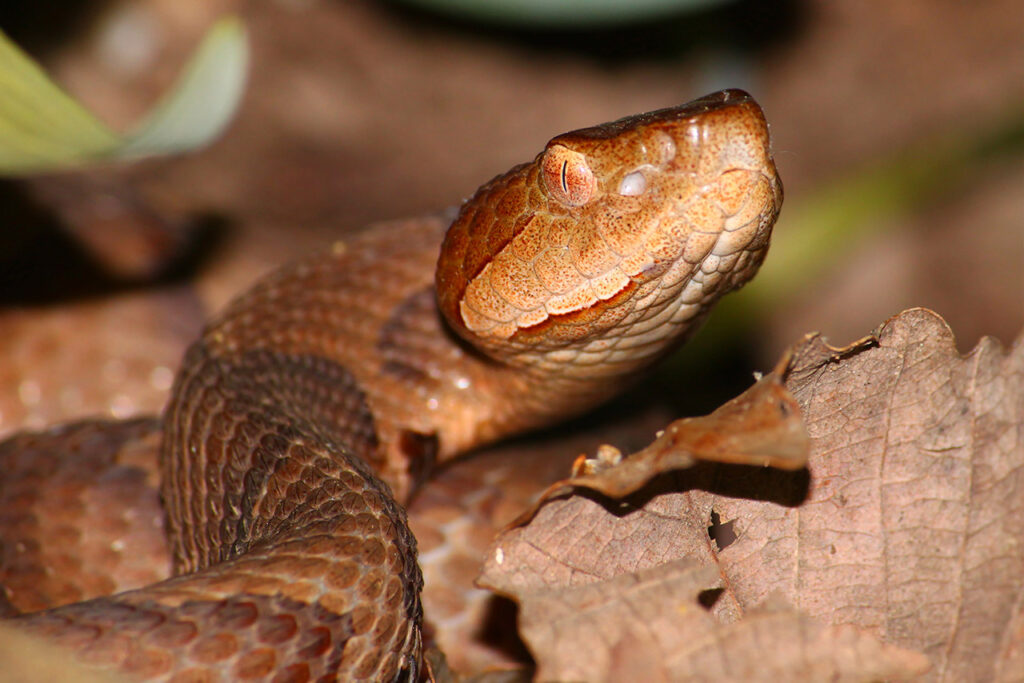Copperhead Snake Facts
The copperhead snake is most commonly found in the Eastern half of the United States. These snakes are venomous and can be defensive of their habitat. Mating occurs during the spring and fall months, and females will bear young after nine months. Copperheads can live for up to 18 years. A copperhead snake’s diet consists mostly of mice, but also can include lizards, birds, amphibians, insects, and even other snakes. Copperheads seek out their prey using heat-sensitive pits on their heads. Once prey crosses their path, the snake will ambush, then inject its prey with venom through its fangs. This makes it easier for them to swallow the prey whole.

Copperhead Snake Infestation
You might see copperhead snakes slither out from timber, logs, or other wood in our around your barn, home, or shed. Signs of a copperhead snake include the sound of rattling, which is actually just the snake vibrating its tail, elongated droppings around your property, or molten skins. It is difficult to specify if a particular snake is present based on habits, as they are generally silent and leave little identifiable damage to crops or buildings. Your best bet is to actually see the snake itself.
Copperhead Snake Bites
Acting as natural predators to common pests like rodents, copperheads are actually good to have around if your property is prone to them. They act as a natural source of pest control. However, while these snakes can be helpful, they like to be left alone by humans. While they won’t cause any damage to your property, they will bite.
If you leave them alone, chances are they’ll just slither away. Don’t take the chance of trying to scare it off or remove it, as this will cause the territorial snake to defend itself, resulting in a dangerous situation.
Types of Copperhead Snakes
Copperhead Snake Identification
On average, copperhead snakes can be two or a little over two feet long. As the name suggests, the snakes possess copper-colored heads, thick, brown bodies and light brown lines that streak across the back. Young copperheads have a yellowish tail that fades to brown as they grow older.
Copperhead Snakes in the Garden & Home
These snakes love rocky landscapes, hillsides, forests, and wetlands, as well as areas with a lot of rotting wood or sawdust. Copperheads are often found around farms, but can show up in cities and suburbs on occasion.
Frequently Asked Questions
Are copperheads poisonous?
While not fatally poisonous to humans, copperhead bites are painful and toxic. Copperhead bites can also leave scars or be gateways to infections if left untreated. To small animals, copperhead bites can be fatally venomous. If bitten, one should seek immediate medical attention to prevent infection.
What are the benefits of professional snake pest control?
Any type of wildlife nuisance or pest can be risky to remove safely without the proper equipment or experience. Removal is particularly dangerous with venomous reptilian pests like copperheads.
Professional pest control specialists have the technology, educational background, and skill to safely but effectively remove the animal while also protecting everyone on the property.
If you’re struggling with snakes on your property, contact us. Our technicians can remove them and help you regain control of your property and sanity.


